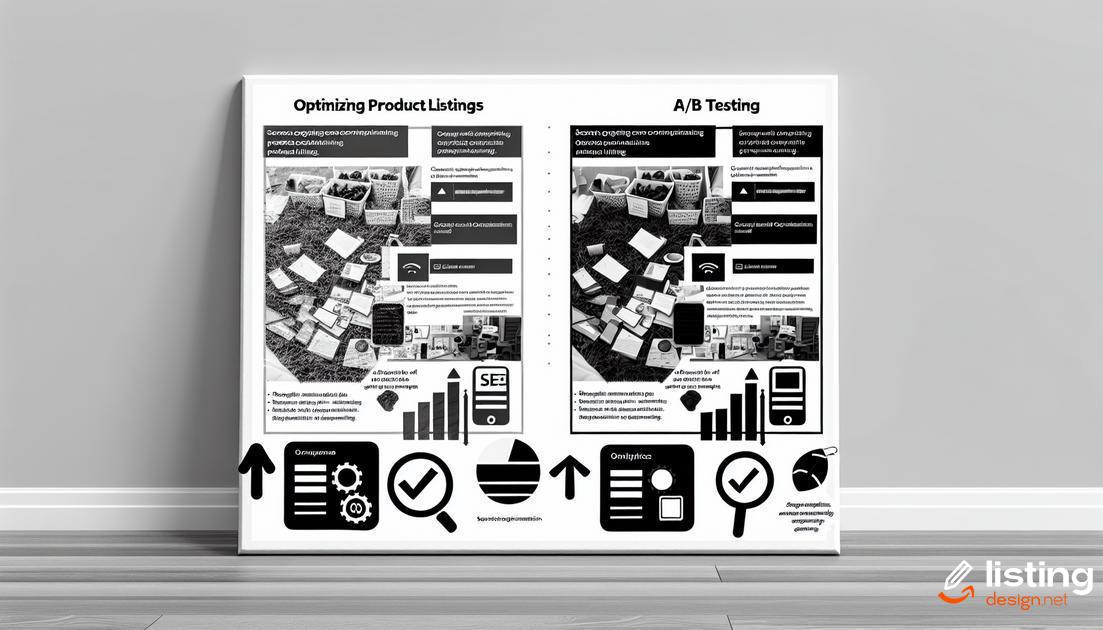Struggling with your Amazon rank improvement? You’re not alone. The competition is fierce, but with the right strategies, you can see your product climb to the top. This article covers essential tips on optimizing your product listings, conducting effective keyword research, and leveraging Amazon’s A9 algorithm to improve your rankings. Let’s dive in and explore these proven methods.
Table of Contents
Understanding Amazon’s A9 Algorithm
Amazon’s A9 Algorithm is a key factor in determining your product’s rank on the platform. This algorithm is designed to measure various factors to deliver the most relevant results to customers. It takes into account the interaction between users and listings, focusing heavily on relevance and performance.
Relevance is gauged by how well your product details match the search queries. This includes proper usage of tags, keywords, and categories that fall in line with what potential buyers are searching for. Ensuring that your product titles, descriptions, and bullet points are optimized with pertinent keywords can significantly impact your visibility.
Performance metrics are equally crucial, if not more. These include conversion rates, customer reviews, and sales history. Amazon’s A9 is likely to rank higher those products that have higher conversion rates and positive reviews. Enhancing the customer experience by ensuring fast shipping and maintaining high product availability also contributes positively.
To stay competitive, it’s essential to continuously analyze search term reports and make necessary adjustments. Look out for trending keywords and make sure to update your listings accordingly. Also, pay attention to competitors’ successful tactics that you can adopt within your listings.
Optimizing Product Listings

When it comes to optimizing product listings on Amazon, several key factors must be addressed to improve your rank. Start with your product title; ensure it’s descriptive and includes primary keywords, but avoid keyword stuffing. It should be clear, concise, and accurately reflect the product.
Next, focus on your bullet points. These should highlight the main features and benefits of the product. Use them to address common customer questions and pain points. Make sure to incorporate relevant keywords naturally.
Another crucial element is the product description. This section should provide a comprehensive overview of the product, using persuasive language to entice the customer. Structure your text with HTML tags to create paragraphs and subheadings for better readability.
Images also play a vital role. Use high-quality, high-resolution images that showcase various angles and features of the product. Include infographics or lifestyle images to illustrate use cases.
Furthermore, leverage backend search terms to enhance discoverability. These hidden keywords won’t be visible to shoppers but will help Amazon’s algorithm index your product more effectively. Finally, continually monitor your listing’s performance and be ready to make adjustments based on data and customer feedback.
Importance of High-Quality Images
High-quality images play a crucial role in improving your Amazon rank. They not only attract potential buyers but also help in conversions. When customers can clearly see what they are purchasing, they are more likely to complete the transaction. Furthermore, images are often the first thing a customer notices when browsing through search results or product listings.
Amazon’s A9 algorithm favors listings with multiple high-quality images because they enhance the user experience. This includes different angles, close-ups, and lifestyle shots. Each image should be clear, well-lit, and free of clutter to effectively showcase the product.
Incorporating high-resolution images can also reduce return rates. When customers have a precise idea of the product they are purchasing, they are less likely to be dissatisfied upon receiving it. This not only improves customer satisfaction but also positively impacts your ranking.
Guidelines for High-Quality Images
Follow Amazon’s image guidelines to ensure your images meet the platform’s standards. Use a white background, focus on the product, and avoid using watermarks or borders. The images should be 1000 pixels or larger in either height or width to enable zoom functionality.
By taking these steps to improve your image quality, you enhance the overall appeal of your product listings. This, in turn, can lead to better engagement, higher conversion rates, and improved rankings on Amazon.
Effective Keyword Research

Effective keyword research is crucial for boosting your Amazon ranking. Start by understanding your target audience’s search behavior. Use tools like Amazon’s own search bar suggestions, which show what customers are actively looking for. Implement keywords that are highly relevant to your product but avoid keyword stuffing.
Consider both short-tail and long-tail keywords. Short-tail keywords are typically more competitive, while long-tail keywords, although less frequent, often lead to higher conversion rates. Incorporate a mix of both types to capture a broader audience.
Use backend search terms effectively. Amazon allows you to add supplementary keywords in the backend of your product listing. These terms don’t appear on your product page but help in improving your product’s discoverability.
Regularly perform competitor analysis. Look at top-ranking products in your category and analyze the keywords they are using. This can give you insights into which keywords are working effectively for similar products.
Lastly, consistently monitor the performance of your keywords. Use Amazon’s analytics tools to track which keywords are driving traffic and conversions. Adapt and refine your keyword strategy based on this data to maintain and improve your product ranking over time.
Utilizing Amazon Advertising
One of the most effective ways to enhance your product’s visibility on Amazon is through Amazon Advertising. This platform offers various ad types and targeting options, all designed to help you reach a broader audience and increase sales. Sponsored Products are among the most popular choices, allowing you to promote individual product listings. This type of ad is CPC-based, meaning you only pay when someone clicks on your ad.
Another potent tool is Sponsored Brands, which helps in boosting brand visibility. These ads showcase your brand logo, a custom headline, and multiple products. They are often displayed at the top of search results, making them highly visible to potential customers. Moreover, Sponsored Display ads target audiences both on and off Amazon, providing a broader reach.
The targeting options are versatile, including manual targeting, where you select specific keywords, and automatic targeting, which allows Amazon’s algorithm to choose keywords for you based on your product information.
Best Practices
To maximize the effectiveness of your campaigns, continually monitor their performance. Use Amazon’s reporting tools to track metrics such as Click-Through Rate (CTR), conversion rate, and Advertising Cost of Sales (ACoS). Adjust your bids and broaden or refine your keyword targets based on this data to ensure you are getting the best possible return on investment.
Budget Management is also crucial. Start with a modest budget and gradually increase it as you see positive results. Make use of A/B testing to determine which ads perform best. Lastly, don’t overlook the importance of Amazon Attribution, which provides valuable insights into how your advertising is influencing customer behavior both on Amazon and across the web.
Enhancing Customer Reviews and Ratings

Encouraging positive customer reviews and ratings is essential for improving your product ranking on Amazon. An increase in the volume and quality of reviews can significantly impact your visibility and sales. Focus on providing excellent customer service by promptly addressing any concerns or questions from buyers. This proactive approach can help generate positive feedback.
Incentivize customers to leave reviews by following up post-purchase with a polite request for feedback. Craft personalized emails or use Amazon’s “Request a Review” button to streamline the process. Ensure that your messaging complies with Amazon’s guidelines to avoid any penalties.
Leveraging Positive Reviews can create a trustable image for your products. Displaying genuine feedback on your product pages helps potential customers make informed decisions, boosting conversion rates. Utilize tools to analyze customer reviews and identify common pain points or product improvements.
Additionally, consider responding to negative reviews constructively. Apologize for any inconvenience and offer solutions or compensations where appropriate. Demonstrating a commitment to customer satisfaction can turn a negative experience into a positive one, potentially leading to revised reviews.
Leveraging External Traffic
One of the most underutilized strategies for improving your Amazon ranking is leveraging external traffic. By driving traffic from external sources, you can boost your visibility and sales, thereby improving your overall ranking on the platform.
Consider using social media platforms like Facebook, Instagram, and Pinterest to promote your products. Engaging content and targeted ads can draw potential buyers to your listings, increasing both traffic and conversion rates.
Influencer partnerships can also be highly effective. Partner with influencers who have a following that aligns with your target market. Their endorsement can drive a significant amount of traffic and build trust with new customers.
Email marketing is another powerful tool. By capturing emails through your website or other methods, you can send targeted campaigns to potential customers, directing them to your Amazon listings.
Lastly, consider using blog posts, YouTube videos, and podcasts to create valuable content that links back to your product listings. This not only drives traffic but also improves your credibility and authority in your niche.
Leveraging these external traffic sources can create a snowball effect, recognizing your products as popular and relevant, further boosting your rankings on Amazon.
Monitoring Performance and Making Adjustments

Monitoring the performance of your Amazon listings is crucial for maintaining and improving your rankings. Utilize Amazon’s Seller Central analytics tools to track key metrics such as sales performance, click-through rates (CTR), and conversion rates. Pay close attention to customer feedback and reviews, as these can provide essential insights into areas that may need adjustment.
Your product title, description, and bullet points should be regularly updated based on the data collected. Analyze which keywords are driving traffic and which are underperforming to finetune your SEO strategy. Be sure to split test different versions of your listings to see which performs better. Updating your product images and ensuring they meet Amazon’s guidelines can dramatically impact your engagement.
Beyond just the listings, evaluate the effectiveness of your Amazon advertising campaigns. Track return on ad spend (ROAS) and make adjustments to your ad placements and targeting as needed. Combining these data-driven strategies will help you adapt to changing market conditions and consumer behaviors, leading to sustained improvements in your Amazon rankings.


